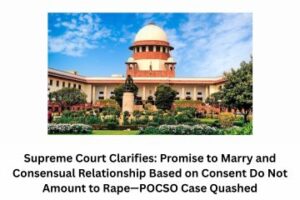Written By: Nikita Mandal
Introduction
Medical negligence has become one of the most serious problems in India nowadays. Patients usually see doctors as God because they cure their illnesses, health problems, and ultimately by them and we expect them to be careful at least when performing their duties towards their patients.
Medical negligence is also called medical abuse which is the inappropriate, inefficient, inappropriate, or negligent treatment of patients by their physicians, dentists, nurses, or other healthcare professionals. In 1995, in the Supreme Court case, the Indian Medical Association v. VP. Shanta and Ors brought medical services within the scope of the services defined in the Consumer Protection Act 1986.
The ‘method free’ to compensate contractual patients provides the power to sue physicians if injured during treatment in consumer protection courts between patients and medical professionals. It is important to examine the growing trend of medical negligence in India and the declining quality of healthcare. Studies of medical negligence decision-making cases can provide insights into the causes of medical negligence cases, the causes primarily responsible for medical negligence, and the impact of the doctor-patient relationship.
Medical Negligence Laws In India
In the circumstances of Indian law, medical negligence comes under three categories that are:
- Criminal negligence
- Civil negligence
- Negligence under consumer protection Act
Criminal law and medical negligence
The Indian penal code treats medical professionals differently than the average person. Section 304A of the IPC 1860 states that a person who causes the death of a person by a negligent act that is not tantamount to murder is punishable by imprisonment for two years, or a fine, or both.
Thus, criminal liability may also be imposed on a physician under special circumstances where the death of a patient during the operation of anesthesia may also be due to malicious negligence.
Qurban Hussain Mohammadali v. the State of Maharashtra, Section 304A, 1860 of the IPC stated that in order to impose criminal liability under section 304-A, it was necessary that the death should be a direct result of rash and negligence without the intervention of another person.
Civil law and medical negligence
The place of negligence under civil law is crucial. Under torture law or civil law, this policy applies even if medical professionals provide free services. It can be said that the Torture Act begins where the Consumer Protection Act ends. In cases where the services provided by doctors and hospitals are not covered by the CPA, patients can seek help from the torture law and claim compensation. Here the onus is on the patient to prove that the damage was caused by the negligence of the doctor or the hospital.
In the case of the states of Haryana and Urs. v. Ms. Santra told the Supreme Court that every doctor has a duty to work with reasonable care and efficiency. Since no human is perfect and even the most famous specialist can make a mistake in diagnosing the disease, a doctor can be blamed for negligence if one can prove that he is guilty of failure and that a doctor with general skills will be guilty if he works with reasonable care.
Consumer Protection Act and Medical Negligence
Since 1990, there has been a great deal of speculation and debate over whether medical services should be explicitly covered under Section 2 (1) of the Consumer Protection Act. Any defects, imperfections, defects, or inadequacies in quality, nature, or performance procedures that are currently required to be maintained by or under any law.
The good positive thing is that there is a minimum fee for filing a complaint before the District Consumer Remedies Forum. In 1995, Indian Medical Association v. VP. SC decision in case of Shanta and Ors. The Consumer Protection Act 1986 brought medical services within the scope of service.
This relationship between patients and medical professionals with the ability to sue physicians if ‘processing free consumer protection is injured during the treatment of contract patients.
Medical Ethics and Accident Victim Treatment
In the case of Prabhat Kumar Mukherjee v. Ruby General Hospital and Oras, II (2005) CPJ35 (NC), the National Commission delivered a landmark decision on the treatment of accident victims at the hospital. The summary of the case is as follows: The complainants are the parents of the deceased son. They went to the National Commission for compensation and adequate relief. Involved in the tragic death of Mr. Sumant Mukherjee, a second-year student of Electrical Engineering. On January 1, 2001, at Netaji Subhash Chandra Bose Engineering College, a bus of Calcutta Tramway Corporation crashed with a motorcycle driven by the deceased. Sumant was conscious after the accident and was taken to a hospital about 1 km away from the accident site.
He was insured for Rs 10,000. India5,000 / – Under the Mediclaim policy issued by New India Assurance Co. Ltd. When he reached the hospital, the deceased was aware and showed the Mediclaim certificate that he was carrying his wallet. He assured that charges would be paid for the treatment and treatment should be started. In line with this promise, the hospital provided moist oxygen to its emergency room began breastfeeding, and began treatment with injectable dripline, injectable lyctinox, and tetanus toxoid.
Respondents demanded immediate payment of Rs 50,000. 15000 / – and the treatment was discontinued as the amount was not immediately deposited though payment was assured by persons from the general public. Indeed, the crowd collected rupees. 2000 / – and the amount was paid along with the patient’s motorcycle and insurance receipt. Since the hospital was uninterrupted after 5 minutes of treatment and the treatment was stopped, people from the crowd were forced to take the patient to the National Calcutta Medical College, which is -8-km away from the present hospital. The patient died on the way and was pronounced dead on arrival at the National Calcutta Medical College.
The National Commission allowed the complaint and ordered the rival Ruby Hospital to pay Rs 50,000 per month. 10 lakh to the complainant for mental anguish. The commission observed: “It may serve the purpose of bringing about a qualitative change in the attitude of the hospital towards providing services to the people as a human being. It is their code of conduct for a person; Allow rendering responsibilities / social obligations.
The National Commission has made the following observations in dealing with the argument that ‘no consideration has been paid, ‘dead or the complainant is not a consumer. Poor people who are provided free services are beneficiaries of services that are hired or taken by the provider. The condition of an emergency or critically ill patient will be the same as that of the poor because both are not in a position to pay. Free services will also be available. Since doctors have started treating a dead person who is receiving the service on their own due to an emergency, it may be a promise of free or late payment.
Expert evidence has shown that discontinuation of treatment has accelerated the death of the patient, which in itself is a lack of service. Severe negligence and laxity on the part of the hospital, denying admission and treatment facilities to young people who were almost dead, violating all medical ethics, and gross violation of the Clinical Establishment Rules and Act of 1950 as amended in 1998. The patient who was advised to be admitted to the ITU was allowed to leave the hospital for treatment elsewhere without signing any document or was not shown a risk bond.
Seconhen dealing with the argument that there is no consent for treatment, the National Commission has observed that since a patient who has been brought in with a serious injury needs to be given emergency treatment, there is no question of waiting for consent. Consent lies in such cases. Conversely, a surgeon who fails to perform an emergency operation must prove that the patient refuses to perform the operation not only at an early stage but also after informing him of the dangerous consequences of not performing the operation. Waiting for the consent of a patient or a pedestrian who brought the patient to the hospital is not unreasonable and is a clear failure on the part of the doctor. The lack of service was proven and compensation was paid.
Case Laws
In Kunal Saha v. AMRI Hospital (advanced medical research institute) famously known as the Anuradha Shaha case. This case was filed in the year 1998 with the allegation of medical negligence on Kolkata-based AMRI hospital along with its three doctors namely Dr. Sukumar Mukherjee, Dr. Baidyanath Halder, and Dr. Balram Prasad.
The facts of the case are that the wife of the plaintiff was suffering from drug allergy and the doctors were negligent in prescribing medicine which further aggravated the condition of the patient and finally led to death. In brief, these were the facts and circumstances of the case, in this case, the final verdict was given by the Supreme court on 24th October 2013, and compensation of around 6.08 crore for the death of his wife. The amount that is paid cannot bring him back and what leads him to death is the negligence of the doctors. A small negligence can have dangerous consequences. It is their duty to provide proper care to their patients because sometimes many patients lose their lives because of them.
Conclusion
Physicians and medical professionals, subject to the rule of the negligence of liability, must show the victim or claimant continued damage that occurred due to the physician’s error to take appropriate care. The growing number of cases of medical negligence raises concerns about the effectiveness of the law in resolving medical negligence issues and providing compensation.
Previous Posts
Right to information in India: A legal analysis




